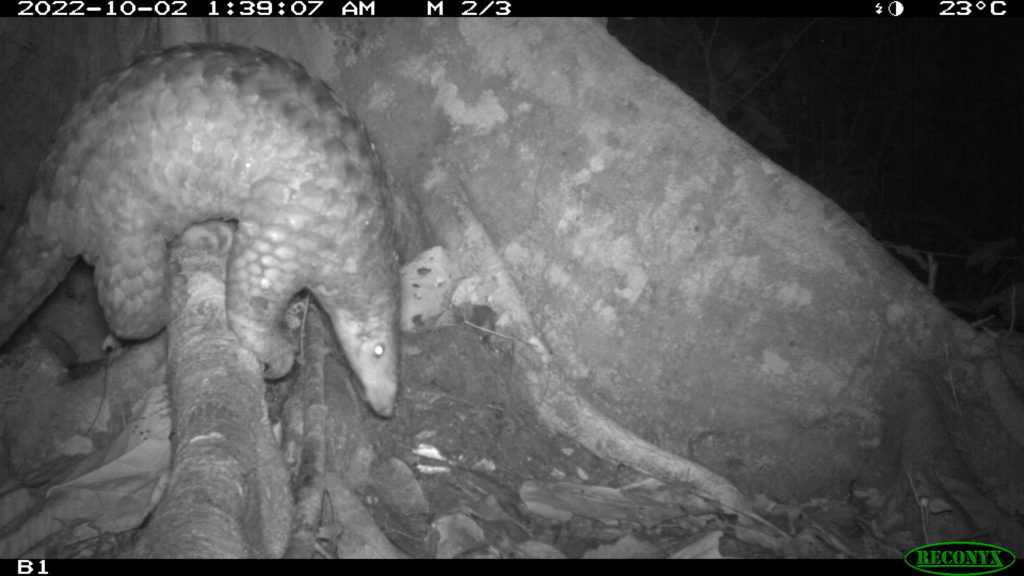Pangolin project allows better understanding of viral transmissions
In collaboration with the School of Public Health, University of Hong Kong (HKU), Danau Girang Field Centre is exploring the potential role the Sunda or Malayan pangolin plays in the emergence of SARS-CoV-2 and other viruses in humans.
This research was commissioned in direct response to a study published by our colleague Dr Tommy Tsan Yuk Lam (HKU), (Lam et al., 2020), which reported that SARS-CoV-2 related coronaviruses were detected in confiscated Malayan pangolin carcasses seized in China during 2017-2019.

The aim of the project is to discover whether the viral strains found in the smuggled carcasses are the same as those found in wild pangolins here, in the Lower Kinabatangan Wildlife Sanctuary, or could originate from other species, such as bats or small rodents which share the pangolins’ habitat and sleeping sites.
The study involves identifying potential pangolin sleeping sites and then installing camera traps to confirm occupancy. Initial recordings show that several species share the burrows and tree hollows with pangolins; the most significant being bats. Bats are infamous as propagators of disease, and the Horseshoe bat (Rhinolophus affinis) is of particular interest because it is known to carry a strain of COVID that is closely related to the SARS-CoV-2 which was found in the samples of smuggled pangolins.
In addition, small mammal traps are also set in the immediate area to identify other species which could share the local habitat and sleeping sites such as mice, rats, shrews and squirrels. Before their safe release, blood samples are taken from the captured small mammals for analysis. This two-and-a-half-year investigation will determine the relationship between species and provide a better understanding of the possible pathways for viral transmission with the aim of predicting the potential level of risk to future outbreaks.
Adapted, by John Robertson, from the project update that first appeared in Jungle Times Issue #144 (September-October 2022).


